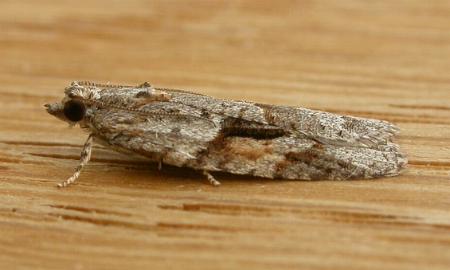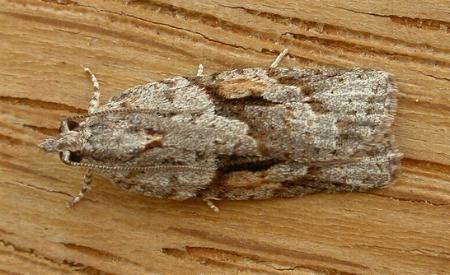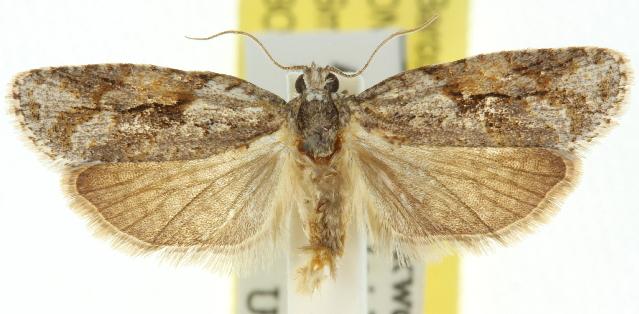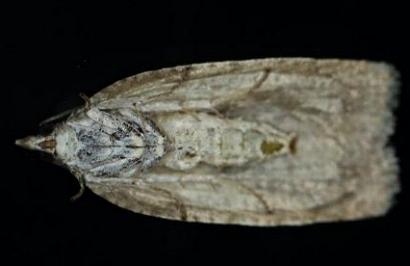
| (previously known as Sciaphila rudisana) ARCHIPINI, TORTRICINAE, TORTRICIDAE, TORTRICOIDEA | (donherbisonevans@yahoo.com) and Stella Crossley |

(Photo: courtesy of
Donald Hobern, Aranda, Australian Capital Territory)

| (previously known as Sciaphila rudisana) ARCHIPINI, TORTRICINAE, TORTRICIDAE, TORTRICOIDEA | (donherbisonevans@yahoo.com) and Stella Crossley |

(Photo: courtesy of
Donald Hobern, Aranda, Australian Capital Territory)
The caterpillars of this species lives in a shelter consisting of a rolled leaf held with silk. The caterpillar attacks a variety of plants, including:

The adult moth has wings that are pale brown, with a complex pattern on each forewing. The hindwings are white, shading to brown at the margins. The wingspan is about 1.5 cms. The pheromones of this species have been identified.

The species has been found in south-eastern Australia in :

Further reading :
Ian F.B. Common,
Moths of Australia,
Melbourne University Press, 1990, pp. 59, 60, 68.
Francis Walker,
Tortricites & Tineites,
List of the Specimens of Lepidopterous Insects in the Collection of the British Museum,
Part 28 (1863), pp. 349-350, No. 58.
 caterpillar |  butterflies |  Lepidoptera |  moths |  caterpillar |
(updated 17 December 2010, 6 July 2019, 12 November 2020)